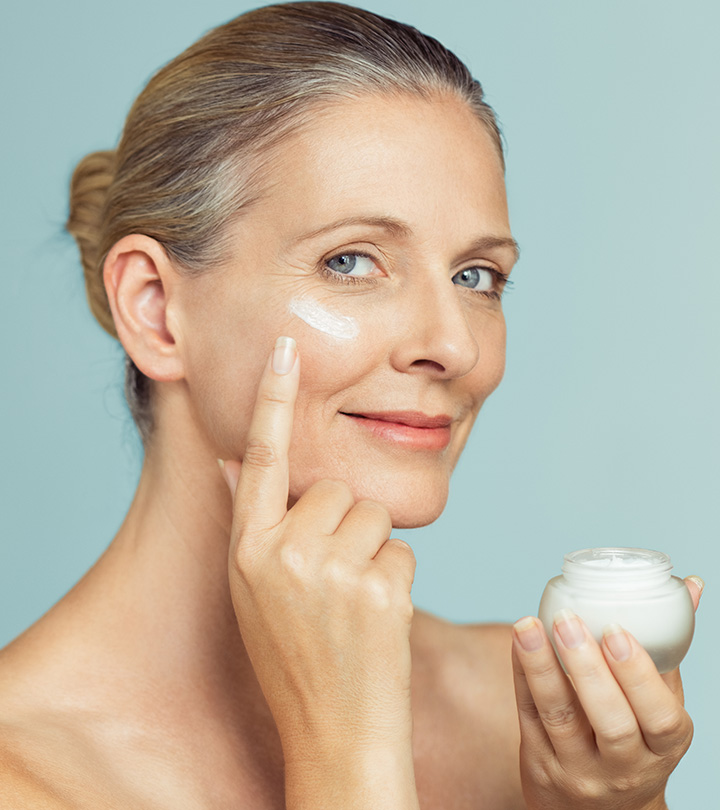Pycnogenol is an ingredient that is fast gaining popularity. But what is it used for? You can use pycnogenol for skin care issues like dryness and aging signs. Even though aging and skin dryness are part of life, these issues can affect your skin appearance and may make you conscious about it.
If you have considered using pycnogenol for your skin, it is important to understand if it is worth the hype. Here, we discuss the effectiveness of pycnogenol, its benefits, and how to use it. Keep reading.
In This Article
What Is Pycnogenol?
Pycnogenol is the trademarked name of a substance extracted from the French maritime pine bark. It is rich in elastin, antioxidants, and collagen, and is ideal for treating dry, aging skin. The active ingredients in this extract can also be found in grape seed, witch hazel bark, and peanut skin. These ingredients are responsible for the characteristic skin benefits of pycnogenol.
StyleCraze TriviaCharles Haimoff developed pycnogenol in his Berlin laboratory in the 1960s.
What Are The Benefits Of Pycnogenol For Skin?
1. May Help Reverse Signs Of Premature Aging
Shutterstock
In a study, 20 postmenopausal women were asked to consume 75 mg of pycnogenol every day for 12 weeks. The participants observed better skin hydration and elasticity by the end of the study period (1). Pycnogenol supplementation was found to reduce the signs of aging.
Pycnogenol may also promote the synthesis of collagen and hyaluronic acid. Reduced collagen levels are known to cause wrinkles (2). Research suggests that hyaluronic acid can retain skin moisture and help delay the aging signs (3).
Related: Top 35 Anti-Aging Foods That Keep Your Skin Youthful
2. May Help Reduce Pigmentation
As per research, pycnogenol may help reduce skin hyperpigmentation caused by exposure to UV radiation (4). It works by fighting free radicals, which otherwise break down the proteins responsible for maintaining your skin’s hue and elasticity.
Pycnogenol also enhances and accelerates the process of cell regeneration and replication (4). This compound is also believed to soften rough skin, soothe inflamed skin, and potentially reduce skin cancer risk. However, more research is warranted in this regard.
Related: 14 Best Home Remedies For Skin Pigmentation & Prevention Tips
3. May Help Heal Wounds
Shutterstock
An animal study showcased the wound-healing abilities of pycnogenol. The compound was found to accelerate wound healing and reduce the appearance of scars (5). However, more research is warranted to further understand the mechanism here.
Apart from these benefits, pycnogenol may also pose some side effects one must be aware of.
What Are The Side Effects Of Pycnogenol On Skin?
Shutterstock
Pycnogenol is generally considered safe for use on skin. That said, you must start with a low dose to allow your body to get accustomed to the supplement. The potential side effects of pycnogenol include:
- Fatigue
- Vertigo
- Dizziness
- Headache
- Mouth ulcers
- Skin irritation
- Urinary issues
- Gastrointestinal issues
- Irritability
- Nausea
- Drowsiness
If you experience any of these side effects, stop the intake of the product and consult your doctor.
No matter how many benefits a product has, one will not be able to see results unless they use it appropriately. Read the next section to understand the best way to use pycnogenol on your skin.
How Do You Use Pycnogenol On Your Skin?
Pycnogenol is an OTC (over-the-counter) product. It is available in the following forms:
1. Supplement
Shutterstock
As per the guidelines set by the National Institute Of Health, adults can ingest anywhere between 50 to 450 milligrams of pycnogenol supplements daily to achieve the desired results (6). However, more research is warranted to determine a safe dosage level for children.
Stylecraze SaysIt is recommended to consume pycnogenol supplement with or right after a heavy meal to reduce the risk of an upset stomach.
2. Cream
You can use pycnogenol cream as part of your morning routine after you apply your serum and before you apply any heavy lotions or oils. You can use this cream for 7 days at a stretch. But if you do not notice any results even after 7 days, we recommend you visit a dermatologist.
3. Skin Powder
You can include this powder in your morning skin care routine. Here’s how:
- Combine the powder with some water and whisk until a smooth paste is formed.
- Apply the paste to your skin and leave it on for 15 to 20 minutes or until it is completely dry.
- Wash the dried paste off with lukewarm water.
- Dry with a soft towel.
- Complete this process by applying some oil or lotion to your skin.
Carry out this process every day for 6 weeks for the best results. If you do not experience any change even after 6 weeks, consult your dermatologist.
Can pycnogenol be used by all? Who would benefit the most from it?
Who Is Pycnogenol Best Suited For?
While everyone can use pycnogenol, the extract is best suited for individuals with aged, pigmented, or dry skin. But if you have any specific skin condition, it is always better to consult a dermatologist before using pycnogenol.
As discussed, you can use pycnogenol in various forms. The compound works well with certain ingredients too. Check them out in the next section.
What Ingredients Work Well With Pycnogenol?
Shutterstock
Several ingredients can be paired with pycnogenol. These include:
- Vitamin C: The ingredient enhances the body’s collagen production (7). It helps firm up the skin and reduces any wrinkles and fine lines.
- Ginkgo Biloba: This is a potent antioxidant thought to work with pycnogenol to soothe skin and increase skin moisture. However, more research is needed in this regard.
- Hyaluronic Acid: Hyaluronic acid is a humectant that helps retain skin moisture. It hydrates the outer skin layers and reduces dry skin, pigmentation, and other signs of aging (3).
You can pair several ingredients with pycnogenol. However, there are a few other ingredients you must never use with this compound. We have covered them in the next section.
Related: Hyaluronic Acid For Hair: How It Works & Possible Side Effects
What Ingredients Should Not Be Paired With Pycnogenol?
It is believed that using pycnogenol with products containing copper peptides may cause adverse effects. However, research is limited in this regard. Consult your dermatologist for more information.
Summing It Up
Pycnogenol is a substance commonly found in pine bark, grape seed, and witch hazel. Studies suggest that some of the benefits of using pycnogenol for your skin include slowing down aging, reducing inflammation, and keeping your skin moisturized. Pycnogenol is available in the form of supplements, cream, or skin powder for use. While pycnogenol is mostly considered safe for use, limited studies suggest that it may cause side effects such as irritation, nausea, or vertigo. If you experience these symptoms, stop using them at once and consult your doctor.




